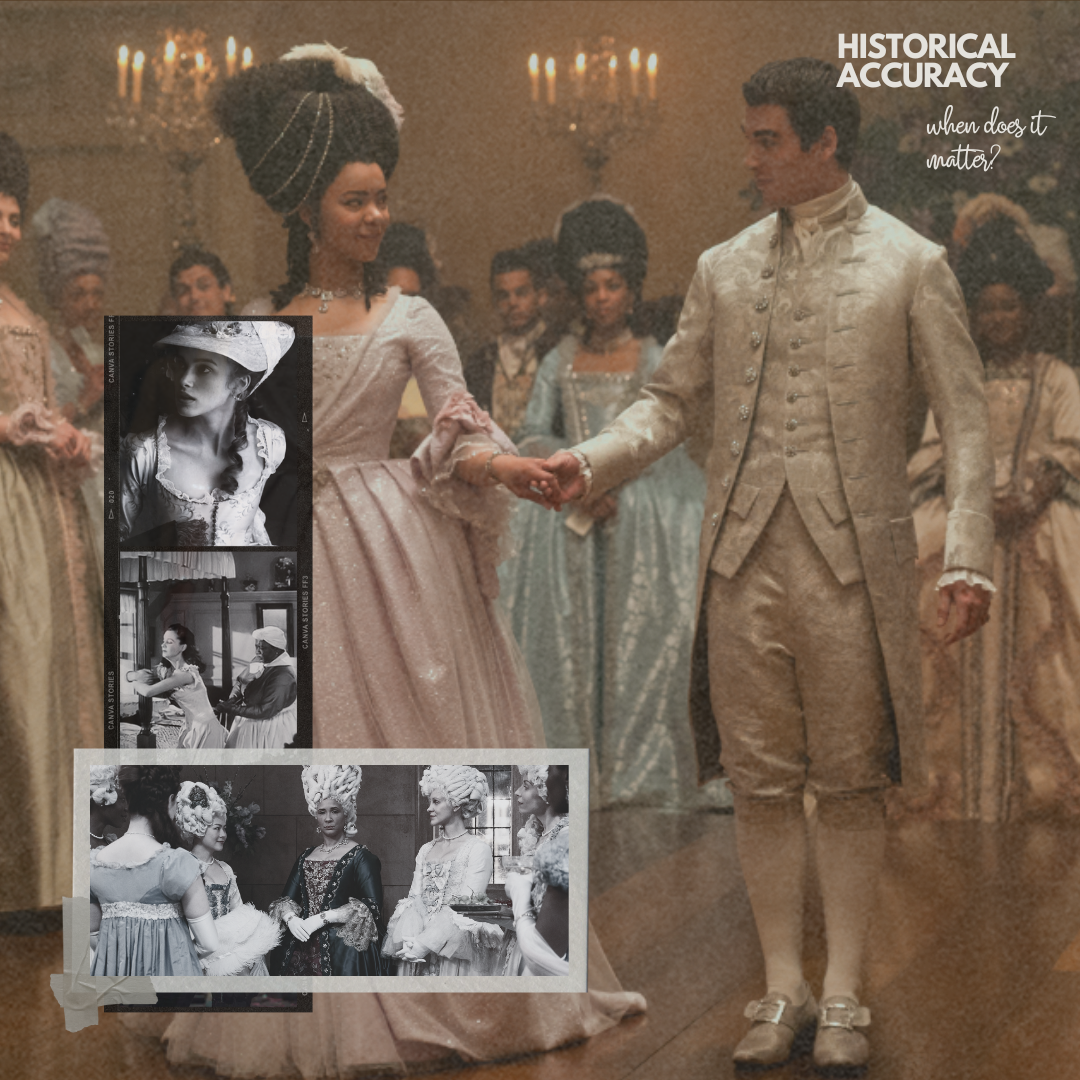Copy Editor: Natalie Sofia
Lead Copy Editor: Jacob Marion
Graphic Designer: Fatema Kaderbahi
Henry Cavill’s departure from “The Witcher” caused fans to draw pitchforks as soon as it was announced on social media. Anger due to a switch in the cast is common, but there’s a good chance that viewers were sharpening their blades for a different reason.
Costumes are an integral part of any historical drama, even if it is set in a fictional world. I’m sure that Lucinda Wright had her own justifications for the looks presented in the show–and I’m all for creative liberty. Still, someone definitely threw in the towel as soon as Yennefer was seen re-fastening her bra in episode 5 of season 3. I would’ve settled for a corset inaccuracy rather than witnessing Victoria’s Secret provocativeness in a medieval setting.
It is one of many questionable moments found in the show. Yennefer, an essential protagonist in “The Witcher”, is seen wearing historically inaccurate costumes including a rope dress, an off-the-shoulder bejewelled gown, and a bright purple cloak.
At first glance, these looks don’t seem to evoke a garish response from both regular movie buffs and costume fanatics, but let’s look at the context. The rope dress was fashioned for a battle instead of armour; the off-the-shoulder gown would better suit a premiere red carpet look, and the purple cloak was intended to disguise the main character while all the background actors were wearing brown. All of these costumes are arguably iconic, but it does make you question the costume designer’s creative decisions.
“The Witcher” joins hundreds, if not thousands, of period dramas that offer excellent examples of historical costume inaccuracies. “Anna Karenina”, “Little Women”, “The Great”, and more famously, “Bridgerton”, have all spiked conversations concerning costume decisions. Obviously, Hollywood doesn’t assume that its intended audience is history or fashion majors–which leads us to the inevitable question–do facts matter when it comes to creative freedom?
In some respects, yes. Some decisions extinguish the fantasy. Films and TV shows work hard to immerse their audiences in the world they’ve created, and making the right costumes is an integral piece of this puzzle.
Yennefer’s bra makes the viewer question whether “The Witcher” truly keeps to its medieval universe. The internet practically blew up when Emma Watson’s character in “Little Women” was seen wearing a seemingly neon green plaid scarf in 1860s Massachusetts. Swapping rave green and Victoria’s Secret for tweed brown and corsets is a more powerful creative decision than one may think.
As a whole, garments that are given a significant amount of screen time absolutely deserve criticism. This is especially true where wardrobe and plot intersect. “Bridgerton’s” spinoff “Queen Charlotte” has a good example of this, where India Ria Amarteifio’s character is complaining about the purpose of a corset in relation to keeping appearances as a wealthy noblewoman.
While the monologue may be a byproduct of fourth-wave feminism compared to the oppressive, constrictive, patriarchal-made corset, the slouched “tied-up,” the show is at odds with the rigid structure of the garment itself. It is very uncomfortable to hunch or slump in a corset. Additionally, this integral wardrobe piece was considered the “underwear” of pre-modern society; you don’t think twice about not wearing it.
Despite a few costuming hiccups in the “Bridgerton” universe, this period drama isn’t totally deserving of backlash. In actuality, it is one of the few shows that is excused of its historical inaccuracies.
Shonda Rhimes, the mastermind behind the Netflix series, interpreted the books as a diverse, utopian society–which is at odds with the seemingly all-white cast that other TV shows and films typically portray. Flush with riches, scenic getaways, poetic confessions, and plot-convenient moments that lead to romance, it makes perfect sense why Ellen Mirojnick–the costume designer behind Bridgerton–reinvented regency-wear for the characters.
The Netflix series is so far removed from anything factual about the era that it creates its own universe. Seemingly devoid of touchy social commentary, the costumes in the show reflect the aloof, lavish atmosphere that its characters and environment veritably emanate.
“The Great”, a historical comedy gaining popularity without the help of Netflix, is considered another prime example of how period-appropriate costumes can shine despite a few factual errors. Catherine the Great, played by Elle Fanning, is seen wearing a bright pink gown—which is seemingly at odds with the detail-oriented, colour-mixed fashions sported by the 18th-century Russian court of the time.
Monochrome and almost neon in hue, you don’t have to be a history buff to notice that this stylistic decision is not historically accurate. That said, its historical inaccuracies work to enhance the character and her motivations. The fiery undertones of hot pink fan the flames of the coup she is planning. Additionally, it adds to Catherine’s oddball nature since, in the show, she is ridiculed for waving her Austrian influence over Russian politics.
Costumes are an integral part of world-building. Maintaining factual accuracy, on the other hand, is debatable. Designers who champion creative liberty should at least consider the intention behind every style choice. Distracting your audience with bizarre, avant-garde looks from the central plot and its characters will quickly land you in social media ridicule.
However, out-of-era colours, trims, fabrics, and even silhouettes can be excused so long as they enhance the message of the story. Typically, this usually garners two or three rewatches–but if you’re a nut about historical accuracy, you won’t complain.



























